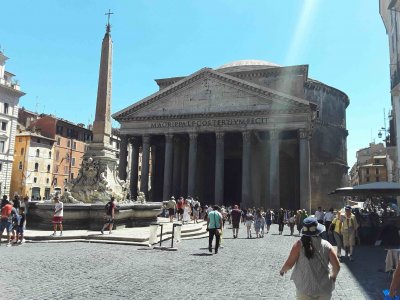maximus otter
Recovering policeman
- Joined
- Aug 9, 2001
- Messages
- 13,975
Scientists have long puzzled over the elusive recipe for ancient Roman concrete, which has withstood the test of time better than any of the concrete that’s been poured in the 20th century. Now, Maria Jackson from the University of Utah claims to have unravelled the mystery, and furthermore believes that the ancient Roman process could influence modern-day construction.
Jackson’s findings, published in American Mineralogist, claim the unbreakable strength of ancient Roman concrete is due to a rare chemical reaction that takes place when the mineral aluminium tobermorite is exposed to sea water. The reaction strengthens the mortar and prevents cracks from forming or widening.
The longer the concrete is submerged in sea water, the stronger it becomes, as a mineral mixture of silica oxides and lime grows between the volcanic rock aggregate, which in turns hardens all the components into a single, unyielding piece. Jackson explained how this is different from our current concrete to Time:
The Pantheon in Rome, still in use over 2,000 years after it was built, is a testament to the strength of ancient Roman concrete.
Jackson said she is currently experimenting with several substances that could act as a substitute for volcanic ash in the concoction, which would also require lime, sea water, and aluminium tobermorite. She has also proposed that the construction of a planned tidal lagoon in the United Kingdom utilize the ancient Roman concrete in place of steel.
https://aleteia.org/2019/07/16/scie...r-ancient-roman-concrete-used-2000-years-ago/
Wikipedia article on opus caementicium, AKA Roman concrete.
maximus otter
Jackson’s findings, published in American Mineralogist, claim the unbreakable strength of ancient Roman concrete is due to a rare chemical reaction that takes place when the mineral aluminium tobermorite is exposed to sea water. The reaction strengthens the mortar and prevents cracks from forming or widening.
The longer the concrete is submerged in sea water, the stronger it becomes, as a mineral mixture of silica oxides and lime grows between the volcanic rock aggregate, which in turns hardens all the components into a single, unyielding piece. Jackson explained how this is different from our current concrete to Time:
“Contrary to the principles of modern cement-based concrete, the Romans created a rock-like concrete that thrives in open chemical exchange with seawater.” She said, adding, “It’s a very rare occurrence in the Earth.”
This may explain the ancient observation of the Roman scientist Pliny the Elder, who wrote in 79 AD that the concrete, “as soon as it comes into contact with the waves of the sea and is submerged, becomes a single stone mass, impregnable to the waves and every day stronger.”The Pantheon in Rome, still in use over 2,000 years after it was built, is a testament to the strength of ancient Roman concrete.
Jackson said she is currently experimenting with several substances that could act as a substitute for volcanic ash in the concoction, which would also require lime, sea water, and aluminium tobermorite. She has also proposed that the construction of a planned tidal lagoon in the United Kingdom utilize the ancient Roman concrete in place of steel.
https://aleteia.org/2019/07/16/scie...r-ancient-roman-concrete-used-2000-years-ago/
Wikipedia article on opus caementicium, AKA Roman concrete.
maximus otter


